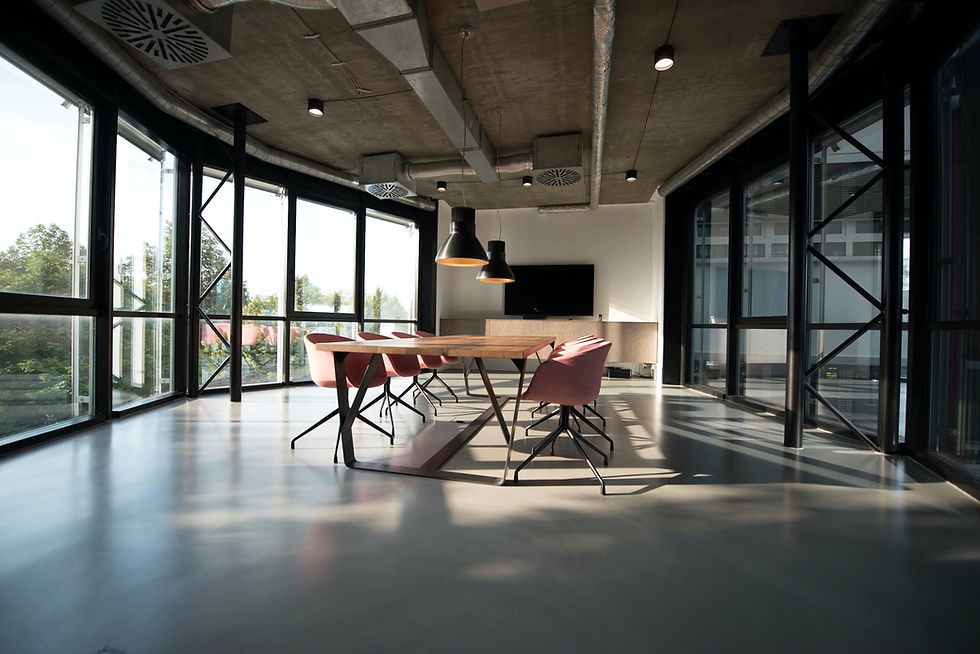Dutch Light Industrial Market Proves Resilient Amid Economic Headwinds
- HighVest & Partners.
- Jul 10, 2025
- 2 min read
“The structural shortage of high-quality light industrial space in the Netherlands presents a significant opportunity for value-driven investors focused on strategic repositioning.”

By HighVest Capital Amsterdam — Q2 2025
Despite ongoing macroeconomic uncertainty and structural challenges in Europe’s logistics infrastructure, the Netherlands' light industrial real estate market is proving notably resilient. In the first quarter of 2025, take-up volumes held steady at approximately 591,000 square meters, mirroring Q1 2024 levels and marking an 11% increase from the previous quarter, according to the latest data from JLL.
This sustained leasing activity—particularly in the smallest business unit segments—signals that underlying occupier demand remains fundamentally intact, even as other sectors of the European real estate market struggle with capital constraints and rising operational costs.
“There’s strong structural demand in the Dutch logistics backbone, especially around major transport corridors,” said a spokesperson from HighVest Capital. “We’re closely monitoring opportunities for value-add plays where obsolete assets can be repositioned.”
A Tight Market and a Quality Gap
The vacancy rate remains unchanged at 2.3%, reflecting an exceptionally tight supply environment. However, the headline figure masks a deeper issue: a growing qualitative mismatch between occupier expectations and the aging stock on offer. Much of the available space consists of older properties increasingly at risk of functional obsolescence.
This dynamic is already nudging rents upward in core locations. The average realized rent stabilized at €90 per square meter per annum, but concessions have begun to rise—a signal that landlords are becoming more aggressive in attracting creditworthy tenants amid limited prime stock.
Investment Volumes Rebound on Mid-Cap Deals
Investor sentiment toward light industrial assets appears to be recovering. Q1 2025 saw €160 million in investment volume, a 25% increase year-over-year. Notably, this was driven by a resurgence in transactions within the €10–20 million range, as institutional and cross-border investors sought relatively liquid, mid-cap opportunities insulated from the volatility in broader capital markets.
While investment was down 13% from the previous quarter, this seasonal adjustment is not unexpected. The prime net initial yield (NIY) remained stable at 5.95%, reflecting both continued appetite and cautious underwriting in a higher-interest-rate environment.
Strategic Outlook: Renovation Over Speculation
As new development remains constrained by zoning limitations, construction inflation, and ESG regulations, landlords are increasingly turning toward revitalizing existing stock. Properties near urban centers with strong labor pools and transportation links are prime candidates for retrofitting or partial redevelopment.
“This creates a compelling opportunity set for firms like HighVest Capital, which specialize in identifying underutilized assets and repositioning them through strategic renovation and asset management,” said Sheran Nasrulah, Managing Partner at HighVest Capital. “The shortage of modern, sustainable warehouse and light manufacturing space is likely to fuel future rental growth, particularly in Randstad cities where land scarcity is a chronic constraint.”
Conclusion
The fundamentals of the Dutch light industrial market—low vacancy, stable demand, and rising investor interest—paint a cautiously optimistic picture for the rest of 2025. While broader economic uncertainty may temper speculative activity, the sector’s resilience offers a hedge for investors seeking exposure to core-plus strategies in a defensible asset class.
For forward-looking capital, the message is clear: the time to engage with light industrial repositioning is now.
For further insights and opportunities, visit HighVest Capital at highvestcapital.com.



Comments